‘For me, Mouraria is like the Tower of Babel, built and rebuilt every day, despite the diversity of languages and its perfect disharmony’ – (Fatima, teacher and descendant of Cape Verdean migrants)
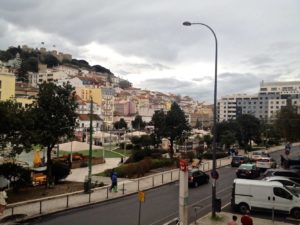 The history of Lisbon and Mouraria – one of the city’s oldest quarters – both originate from the presence of diverse people and cultures. In 1143, Lisbon was conquered from the Moors by King Alfonso Henriques, becoming a Christian city. The birth of Mouraria goes back to the same period, built outside the walls as the only territory where Moors were authorized to reside.
The history of Lisbon and Mouraria – one of the city’s oldest quarters – both originate from the presence of diverse people and cultures. In 1143, Lisbon was conquered from the Moors by King Alfonso Henriques, becoming a Christian city. The birth of Mouraria goes back to the same period, built outside the walls as the only territory where Moors were authorized to reside.
 In the 16th century, the first black migrants were forced into slavery in Lisbon, in that era the largest European centre of the flourishing slave trade. The number of slaves present in the capital reached 10% of the total population, that time comprising 100,000 inhabitants.
In the 16th century, the first black migrants were forced into slavery in Lisbon, in that era the largest European centre of the flourishing slave trade. The number of slaves present in the capital reached 10% of the total population, that time comprising 100,000 inhabitants.
In the 18th century, the rebuilding of the city – after its apocalyptic earthquake on All Saints Day, 1 November 1755 – led to significant flows of migrant workers from Galicia, Spain’s most north-western province. In the course of the 19th and 20th century, an exodus from the countryside ignited major demographic growth in the capital just as migration from the Portuguese colonies, in response to the need for labour.
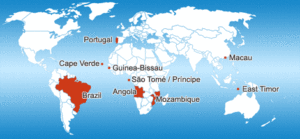 On 25 April 1974, Portugal became a democracy after 48 years of dictatorship. Between April and November 1975, Portugal took in half a million Portuguese and their descendants from its ex-colonies in Africa.
On 25 April 1974, Portugal became a democracy after 48 years of dictatorship. Between April and November 1975, Portugal took in half a million Portuguese and their descendants from its ex-colonies in Africa.
At the end of the ‘80s, a growing number of migrants began to arrive from Brazil, benefitting from a special provision for regularisation. Finally, from the ‘90s onwards, migration towards Lisbon has involved new areas such as Eastern Europe (Ukraine, Romania) and Asia ( Bangladesh, India).
 Mouraria is the most multicultural neighbourhood of the capital. Here you find everything from African grocers to Chines tea, Indian clothing, religious talismans, Bengali restaurants, mosques and halal butchers. The percentage of foreign residents (25%) is well above the average for the city (10%) and the nation (less 4%).
Mouraria is the most multicultural neighbourhood of the capital. Here you find everything from African grocers to Chines tea, Indian clothing, religious talismans, Bengali restaurants, mosques and halal butchers. The percentage of foreign residents (25%) is well above the average for the city (10%) and the nation (less 4%).
Considered until recently a socially degraded area – situated close to the historical city centre – the neighbourhood is nowadays a breeding ground for integration with tastes, sounds and smells from every corner of the world.
 In the heart of Mouraria resides the Associação Renovar a Mouraria (Renovate the Mouraria). This NGO not only develops activities to support the local community (i.e. Portuguese lessons for migrants, a legal help desk, empowerment courses for women and educational support for children) but also organizes cultural events and festivities linked to Saint Anthony in June, when the streets fill with music and the smell of grilled sardines.
In the heart of Mouraria resides the Associação Renovar a Mouraria (Renovate the Mouraria). This NGO not only develops activities to support the local community (i.e. Portuguese lessons for migrants, a legal help desk, empowerment courses for women and educational support for children) but also organizes cultural events and festivities linked to Saint Anthony in June, when the streets fill with music and the smell of grilled sardines.
Bom fim de semana Enjoy the weekend (pics Sapo)

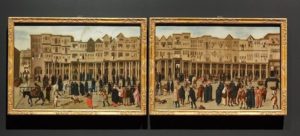
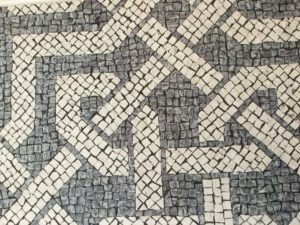 Since Portugal has been declared World’s Leading Destination and Lisbon Best City Break in 2017, I’ am sure you are dying to visit the country in order to see for yourself, whether these prestigious awards are justified.
Since Portugal has been declared World’s Leading Destination and Lisbon Best City Break in 2017, I’ am sure you are dying to visit the country in order to see for yourself, whether these prestigious awards are justified. 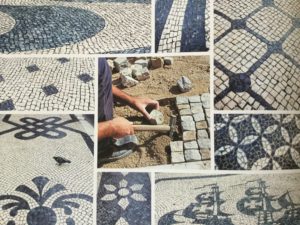 However, that hasn’t always been the case. It started as a forced task performed by prisoners in the nineteenth century. Only later it evolved into a craft and pavers (calceteiros) became recognized artisans, whose art became appreciated in such a way, that it spread to many cities and continents.
However, that hasn’t always been the case. It started as a forced task performed by prisoners in the nineteenth century. Only later it evolved into a craft and pavers (calceteiros) became recognized artisans, whose art became appreciated in such a way, that it spread to many cities and continents.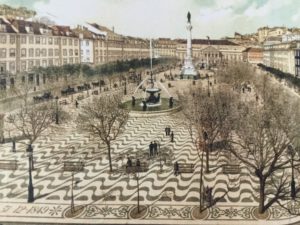 It became an immediate success and similar works were ordered, such as the paving of Lisbon’s major square Praça D. Pedro IV – popularly known as Rossio (meaning ‘wide and public space’) – that took place between 1846 and 1849.
It became an immediate success and similar works were ordered, such as the paving of Lisbon’s major square Praça D. Pedro IV – popularly known as Rossio (meaning ‘wide and public space’) – that took place between 1846 and 1849.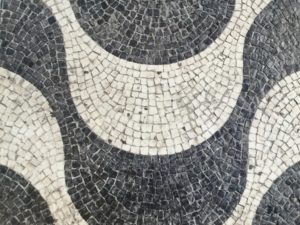 The pavement of Rossio was called ‘Wide Sea’ (Mar Largo) for depicting waves, symbolizing the encounter between the Tagus river and the Atlantic Ocean, which launched the Portuguese into the Discoveries in the 15th century. After Rossio, Lisbon adopted mosaic pavement for all its squares and sidewalks and it became the most popular pavement in historic Portuguese towns and famous worldwide.
The pavement of Rossio was called ‘Wide Sea’ (Mar Largo) for depicting waves, symbolizing the encounter between the Tagus river and the Atlantic Ocean, which launched the Portuguese into the Discoveries in the 15th century. After Rossio, Lisbon adopted mosaic pavement for all its squares and sidewalks and it became the most popular pavement in historic Portuguese towns and famous worldwide.